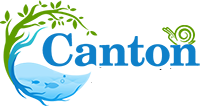Benefits of Using Floating Aquarium Plants
Floating aquarium plants provide numerous benefits to your underwater ecosystem.
They help to create a natural and balanced environment for your fish.
These plants provide additional hiding spots and resting areas for your fish.
Floating plants also help to reduce algae growth by absorbing excess nutrients from the water.
They can improve water quality by removing toxins and pollutants.
In addition, floating plants contribute to the overall aesthetics of your aquarium, creating a beautiful and serene underwater display.
Top 5 Floating Aquarium Plants
1. Water Lettuce (Pistia stratiotes): Water lettuce is a popular choice for its attractive rosette shape and vibrant green color. It floats on the surface of the water and provides shade and cover for fish.
2. Amazon Frogbit (Limnobium laevigatum): Amazon frogbit has small round leaves and long roots that dangle into the water. It is known for its fast growth and ability to absorb excess nutrients.
3. Salvinia (Salvinia spp.): Salvinia is a floating fern with small, oval-shaped leaves that form a dense mat on the water's surface. It is great for providing shade and reducing algae growth.
4. Duckweed (Lemna minor): Duckweed is one of the smallest floating aquarium plants, with tiny leaves that resemble a floating carpet. It is fast-growing and helps to control algae.
5. Red Root Floater (Phyllanthus fluitans): Red root floater has vibrant red roots and small green leaves. It adds a pop of color to your aquarium and helps to reduce algae.
Care Tips for Floating Aquarium Plants
Floating aquarium plants are generally low-maintenance, but there are a few care tips to keep in mind:
Ensure that your aquarium has enough light for the plants to thrive.
Provide regular fertilization to promote healthy growth.
Trim and thin out the plants as needed to prevent overcrowding.
Monitor water parameters to ensure they are within the optimal range for the plants.
Regularly remove any dead or decaying plant material to maintain water quality.
Avoid using copper-based medications or treatments, as they can be harmful to the plants.
Creating a Stunning Aquascape with Floating Plants
Floating aquarium plants can be used to create a stunning aquascape in your aquarium. Here are some tips:
Use a combination of floating plants with different shapes, sizes, and colors to add visual interest.
Consider the overall layout and design of your aquarium when placing floating plants.
Create focal points by clustering floating plants in specific areas.
Balance the density of floating plants with other types of aquatic plants and decorations.
Experiment with different arrangements to find the perfect balance and create a visually pleasing underwater display.
Maintenance and Troubleshooting
Regular maintenance is important to ensure the health and vitality of your floating aquarium plants.
Monitor water parameters regularly and make any necessary adjustments.
Remove any debris or dead plant material from the water to maintain water quality.
Trim and thin out the plants as needed to prevent overcrowding and maintain their shape.
If you notice any signs of nutrient deficiencies or algae growth, adjust the lighting and fertilization accordingly.
Keep an eye out for any pests or diseases that may affect the floating plants and take appropriate measures to control them.






Leave a Comment